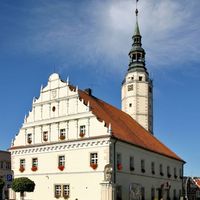Prudnik County
7.94

Overview
Prudnicki County, located in the southern part of the Opole Voivodeship, was re-established in 1999. Its capital is the town of Prudnik, which in the pre-war period was an important center, characterized by numerous historic buildings, including churches and a market square. The county also includes the municipalities of Biała and Głogówek, and its history dates back to the times of the Habsburg Monarchy. This region, situated in Upper Silesia, has undergone numerous administrative and territorial changes, and after World War II, it became part of Poland. In 1921, during a plebiscite, the inhabitants voted predominantly in favor of belonging to Germany. The county displays influences of Polish, German, and Silesian cultures, reflecting its rich ethnic composition. In 2021, 14.72% of the residents declared a non-Polish nationality, with Germans and Silesians being the majority among them. The county is renowned for its diverse architecture, featuring many historic sites such as churches, palaces, and traditional houses that mirror the region's rich history. Road and rail transport in the county is well-developed, with two national roads and numerous local routes facilitating communication. The county is also known for the activities of the Border Guard due to its location in a border zone. The county's authorities are represented by the Prudnik County Council and the County Board, and many cultural and social initiatives are undertaken by the local community, contributing to the preservation of the region's cultural heritage. An interesting fact is the Honorary Badge of Prudnik County, awarded to individuals and institutions for their contribution to the development of the region, highlighting the importance of local leaders in building the identity and community of Prudnik County.
Location
State
Opolskie Voivodeship
Country
2025 Wizytor | All Rights Reserved









